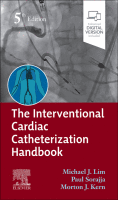Physical Address
304 North Cardinal St.
Dorchester Center, MA 02124

You’re Reading a Preview Become a Clinical Tree membership for Full access and enjoy Unlimited articles Become membership If you are a member. Log in here

Key points Structural heart procedures include percutaneous valve replacement (or repair), left atrial appendage occlusion (or ligation), placement of devices across the intra-atrial or intraventricular septum, and placing plugs across spaces with perivalvular blood flow. Heart teams inclusive of interventional…

Key points Endovascular aneurysmal repair (EVAR) for abdominal aortic aneurysm (AAA) is a minimally invasive procedure that involves the placement of a bifurcated or tubular endoluminal stent graft over the AAA to exclude the aneurysm from arterial circulation suitable for…

Key points Patients with symptomatic lower extremity peripheral artery disease often present with classical burning, cramping pain made worse with exertion and better with rest (known as “intermittent claudication”). The symptomatic location is typically one level below the area of…

Key points Peripheral interventions require a variety of equipment different from coronary interventions and specific for the noncoronary interventional complexity. Access site and equipment choices are driven by the specific procedure to be performed and require careful preprocedural planning. Most…

Key points Access for noncardiac procedures employs many of the same techniques as access for cardiac procedures with the choice of access site determined by patient-related factors and specific procedural needs. Antegrade femoral and tibiopedal access techniques have been developed…

Key points Complications remain rare during interventional procedures and prediction tools have been developed to help operators appreciate potential risks before the procedure. Although avoidance of complications remains the primary goal, keen awareness must exist during the procedure to react…

Key points Coils, plugs, covered stents, and snares are invaluable components of the interventional “toolbox” with a wide range of emergency and nonemergency applications. Coils, vascular plugs, and covered stents can be used effectively for the treatment of coronary or…

Key points Complex percutaneous coronary intervention (PCI) procedures have become more common as techniques for chronic total occlusions (CTOs), bifurcation, and left main lesions have been developed with improved outcomes. Complex PCI can create significant acute risk for hemodynamic collapse…

Key points Acute myocardial infarction (AMI) is best treated with timely revascularization using percutaneous coronary intervention (PCI). ST-segment elevation myocardial infarction (STEMI) systems of care are crucial in allowing patients with AMI to have the opportunity for timely care at…